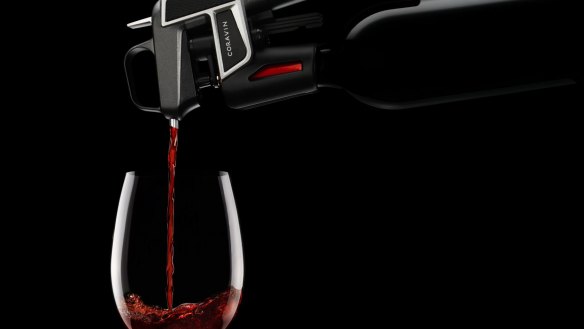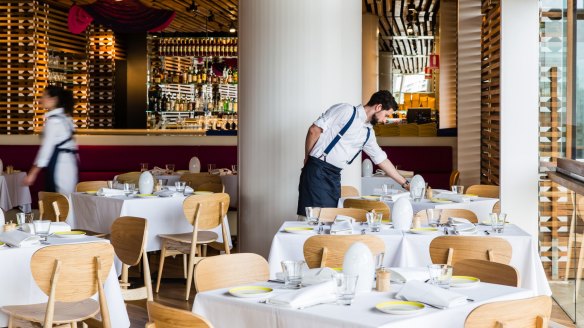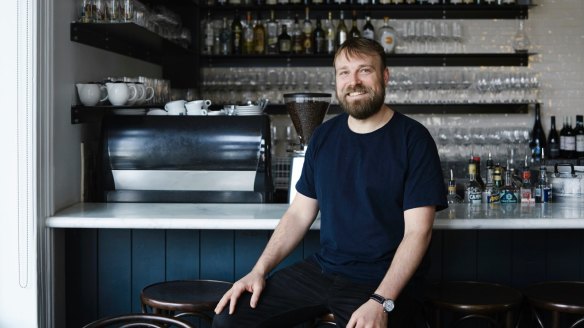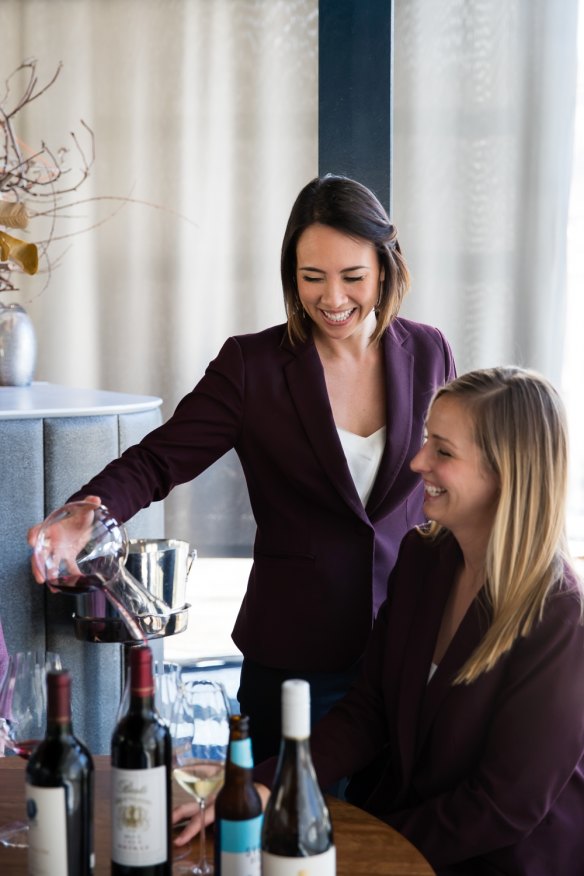Corvavin, collaborations and chablis: The restaurant wine trends of 2018

Wine keeps the restaurant world turning. The high cost of rent, staff, food and furnishings means restaurant profit margins are tighter than Mick Jagger's jeans. It's booze sales that help keep venues afloat, especially at the loftier end of fine-dining.
This has long been the case. But with the general wine knowledge of diners increasing year-on-year, and bottle shops becoming more exciting and better stocked, restaurants need to make sure their booze game is en pointe to get punters through to door and keep them there. It's no longer enough for a sommelier to offer a wine list – they need to offer a wine experience. Here are the five wine trends and shifts happening in Australian restaurants right now.
Coravin is king

The Coravin is an American-made needle-through-cork gadget that allows wine to be poured by the glass while the cork stays in place. The remaining wine remains unoxidised and preserved for another day so you can sample big-ticket drops without buying the whole bottle. Since hitting the market in 2013, the Coravin has decreased in price and improved its reliability. For many somms, it's the greatest invention since the screw cap and Coravin pours have increased with gusto across Australia in the last 18 months.
"Coravin is huge at Aria Sydney," says Alex Kirkwood, head sommelier of Matt Moran's harbourside flagship and wine scholar of the prestigious Len Evans Tutorial. "I have around 30 wines poured by Coravin at the moment. It's great to be able to offer something at a premium level for a longer period of time.
"It's been particularly beneficial for our pre-theatre crowd - guests who want to drink really well, but don't want to knock back a whole bottle and fall asleep in the opera. Before Coravin, they might be able to drink a $30 glass that we were pouring as per normal. Now they can have a $230 glass of Grange."
I think the Coravin can remove intensity and excitement from a bottle of wine. I kind of like that clock ticking away once you pull the cork.
Alan Hunter is general manager and sommelier at Otto Brisbane, awarded Wine List of the Year in the Good Food Guide 2019. He says the Coravin has become a key factor in elevating the restaurant experience.
"When staff are at the table talking about Piedmont, for instance, we can now serve guests 60ml Coravin pours of a barolo, barbaresco and barbera. We can create a wine flight on the fly."
Travis Howe of Melbourne's Carlton Wine Room has a different view on the device.

"I'm pretty anti-Coravin, to be honest," says the Good Food Guide 2019 Sommelier of the Year. "For me - and this is purely my personal opinion - when running a team of guys and girls on the floor, once they have that security blanket of a Coravin there's less incentive to sell wine. I say 'You can pull any cork you want and sell that bottle by the glass. If you believe in the wine, and you can talk about it, then you can pull that cork and sell the whole bottle by this time tomorrow.
"I think the Coravin can remove intensity and excitement from a bottle of wine. I kind of like that clock ticking away once you pull the cork."
There's more to wine matching than wine

Wine, for the most part, is a brilliant accompaniment to food. That's a cold, hard, indisputable fact. In the last two years, however, there's been a stronger focus from sommeliers to match beverages other than wine with entrees, mains and especially dessert.
"Certain grappas and rums can work really well with desserts, and we're trying to get cognac's name on the board more often, too." says Howe. "I feel like we're just at the tip of the iceberg with drinks pairings. There's a lot more access these days to beverages other than wine and we're only just starting to play around with drinks matchings now. You get some right, you get some wrong. It's all part of the fun."
When Sydney's three-hatted Quay reopened after a major renovation and menu overhaul in July, head sommelier Shanteh Wong received kudos from restaurant critics and booze fans for offering an optional wine-free "round of drinks" pairing to chef Peter Gilmore's tasting menu.
"The round of drinks pairing is about celebrating the unsung heroes of the beverage world and giving them a voice," Wong says. "It has been very well received. I think of it as the red pill pairing, one that takes you down the rabbit hole so to speak. Sometimes we find the whole table doing all three [wine and drink] matches we offer so they can compare and discuss what they like or dislike about that beverage with the dish.
"The pairing has also been a challenge for me, as the proof is really in the pudding. A spirit or vermouth can make a lot of sense in your mind but unless it adds something to the experience and showcases Peter's creations then it defeats the purpose."
Orange is the new rosé
Just to be clear, and so I don't receive grumpy emails from Central West NSW, we're talking about orange wines with a lowercase "o" here, not delicious cool-climate shiraz from the Orange region. Also known as skin-contact or amber wines, these are drops starring white grapes treated like red ones with the juice macerated on the skins. In the last few years, orange wine has soared in popularity from fringe wine bars to Australia's top restaurants.
"Orange wine has a very large spectrum," Hunter says. "Skin contacts can be so extreme that people might find themselves repulsed if they've never tasted one before, but then you have examples that are so subtle they're almost like a pinot gris with a bit of blush to it.
"Food is the greatest way to communicate skin-contact wine. It's very textural and when paired with food, the wine has context and guests better understand what skin-contacts are trying to achieve."
Howe agrees. "When food is on the table, that's when orange wines are at their best. We had some great asparagus come in last week and the sauvignon blanc skin contact that Dave Mackintosh is making with Smokestack Lightning in the Yarra was perfect for it. I find half a glass of orange wine is often the ideal amount too - you don't have to smash the bottle."
Howe says orange wine's popularity is partly because it works so well with food and partly because it's just plain fashionable right now. "It's the same as rosé ten years ago."
The (price) rise of chablis
"Chablis drinking has become such an expensive sport that the customer's perception of chablis versus the reality of how much it costs these days is a bit of a shame," Howe says. "It's no longer the people's wine. Prices have gone up considerably in the last 18 months."
Indeed, the New World has gone a bit mad for the flinty Burgundy chardonnay. Restaurateur Chris Lucas even opened a chablis bar at Melbourne's sushi-loving Kisume in 2017.
"We're now looking at chablis alternatives," Howe says. "All sorts of different grapes that are light, crisp and fresh. When people ask about chablis, we can say 'Well what about a great muscadet which costs the same as chablis cost 10 years ago? It's not quite as good but it's still super delicious'. A nice, crisp chenin blanc is great too, and sauvignon blanc is a secret killer with relatively good value at moment for its quality."
"The cost of chablis is part of a broader conversation about the prince increase of burgundy across the board," Kirkwood says. "It's the basic principle of supply and demand. China has somewhat fallen out of love with bordeaux, for instance, and is starting to drink more burgundy. Allocations become smaller and prices go up. But, at the same time, the quality of chardonnay from Australia and New Zealand is now so strong that guests can confidently ask for style similar to chablis and a good sommelier will deliver."
Cheers to collaborations
House wine has moved light-years beyond carafes of cut-price claret and flabby dry white. It seems every second restaurant is now working with a winemaker, brewer or distiller (sometimes all three) to provide a pour for the wine list you won't find elsewhere. Quay has its own brand of Four Pillars gin, for example, and chef Kylie Kwong works closely with Two Metre Tall brewery in Tasmania to provide exclusive wild-ferment ales to compliment the Australian ingredients at Billy Kwong.
"It's important to be able offer something different," says Kirkwood who has just collaborated on a Margaret River chenin blanc for Aria with Blind Corner winemaker Ben Gould.
"I get 80 bloody emails a day from people trying to sell me booze but there's only so much booze we can buy and so many different expressions of the same grape variety or region we can sell. The point of collaborating is to add a degree of separation and uniqueness to what everyone else is doing."
Howe says he always has a few collaborations on the burner, and is currently working on a pinot blanc with Tasmanian winery Domaine Simha, and a lager with a local brewer to be released in time for summer.
"Collaboration isn't a major part of what I do but it's a lot of fun," he says. "Having conversations with the producer is great - I love it. We don't put any branding or labelling on the collabs though - it's still the producers wine. Although we might collaborate on an idea, they're the ones doing all the work."
The Good Food Guide's second annual national edition, with hats awarded across Australia, was launched on October 8 with our presenting partners Vittoria Coffee and Citi. The Good Food Guide 2019 is on sale in newsagencies, bookstores and via thestore.com.au/gfg19 (delivery included), RRP $29.99.
Restaurant reviews, news and the hottest openings served to your inbox.
Sign up- More:
- Good Food Guide
